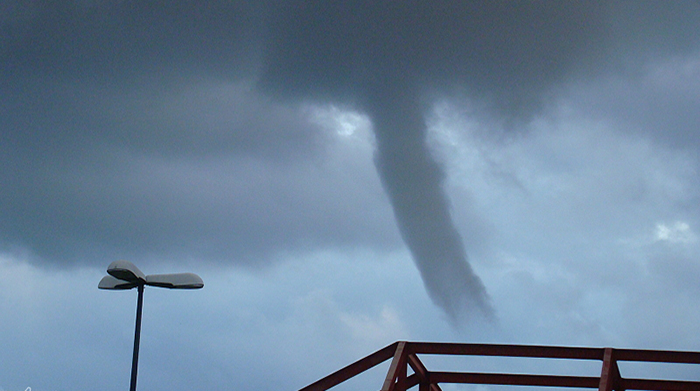New Technology Provides Instant Tornado Damage Assessment

Image courtesy of Antonio Lordelo under Attribution-NonCommercial-NoDerivs 2.0 Generic Deed, resized to 700 x 391 pixels.
Texas A&M researchers have built a new state-of-the-art technology that can complete tornado damage assessment, and develop restoration time estimates, within hours after the event has ended. The technology combines high-res satellite imagery, artificial intelligence, and machine learning to provide a “macro-level” view of the damage in near real time.
Details of the Texas A&M Tornado Damage Assessment Tool
The technology trumps the traditional method of tornado damage assessment due to the speed with which it can accomplish the objective. Previously, an accurate damage assessment required boots on the ground, an extremely time-consuming process that could take days. But with this new technology, first responders and utility crews are provided with the information they need to respond within hours.
Once a tornado has passed, the technology analyzes satellite imagery of the damaged area by comparing it to imagery from prior to the event as well as from previous events to develop detailed damage maps. These maps can then be used to quickly plan restoration routes and priorities.
The ultimate goal is to integrate the technology into municipalities’ emergency response operations. This would allow resources to be deployed when and where they are needed most. It would also enhance local officials’ ability to address safety and public health issues more efficiently and effectively.
Eventually, the researchers plan to develop similar models for other types of natural disasters, including earthquakes, hurricanes, tsunamis, and wildfires. But first things first – the tornado damage assessment technology needs to be shared and adopted.
that said, this is great news for utilities. Although the Texas A&M model is not designed for the utility industry, it should kickstart the ability to develop something similar for utilities, especially electric utilities. Whether we’re talking about tornado damage or something similar, the more real time intelligence that can be gathered, the better off everyone will be – utilities, regulators, customers, and anyone else with skin in the game.


